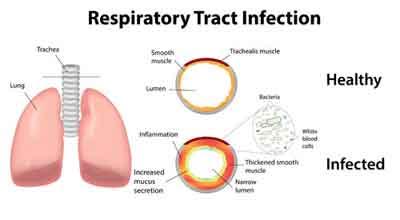- Home
- Editorial
- News
- Practice Guidelines
- Anesthesiology Guidelines
- Cancer Guidelines
- Cardiac Sciences Guidelines
- Critical Care Guidelines
- Dentistry Guidelines
- Dermatology Guidelines
- Diabetes and Endo Guidelines
- Diagnostics Guidelines
- ENT Guidelines
- Featured Practice Guidelines
- Gastroenterology Guidelines
- Geriatrics Guidelines
- Medicine Guidelines
- Nephrology Guidelines
- Neurosciences Guidelines
- Obs and Gynae Guidelines
- Ophthalmology Guidelines
- Orthopaedics Guidelines
- Paediatrics Guidelines
- Psychiatry Guidelines
- Pulmonology Guidelines
- Radiology Guidelines
- Surgery Guidelines
- Urology Guidelines
Narrow-spectrum antibiotics as effective as Broad-spectrum antibiotics in RTI in children

Acute respiratory tract infections account for the majority of antibiotic exposure in children, and broad-spectrum antibiotic prescribing for acute respiratory tract infections is increasing of late. It is not clear whether broad-spectrum treatment is associated with improved outcomes compared with narrow-spectrum treatment.
Dr.Jeffrey S. Gerber et al in a retrospective cohort of 30 159 children evaluated if treatment with broad-spectrum antibiotics results in better clinical or patient-centered outcomes than narrow-spectrum antibiotics for children with acute respiratory tract infections.The researchers found that broad-spectrum antibiotics are not more effective than narrow-spectrum antibiotics and can lead to more adverse events.The study has been published in JAMA.
The researchers used electronic health record data from 31 pediatric practices and identified over 30,000 children aged 6 months to 12 years who were diagnosed with acute respiratory tract infections (otitis media, group A streptococcal pharyngitis, or sinusitis) and received prescriptions for oral antibiotics in 2015. About 15% were prescribed broad-spectrum antibiotics (e.g., amoxicillin-clavulanate, cephalosporins), and the remainder were prescribed narrow-spectrum drugs (penicillin, amoxicillin).
It was found that in group A streptococcal pharyngitis and acute sinusitis, treatment with broad-spectrum vs narrow-spectrum antibiotics was not associated with treatment failure but was associated with higher rates of adverse events (3.7% vs 2.7%, respectively). In a prospective cohort of 2472 children, receipt of broad-spectrum vs narrow-spectrum antibiotics was associated with a slightly worse child quality of life and higher rates of adverse events (35.6% vs 25.1%, respectively).
At 14 days, treatment failure did not differ significantly between the treatment groups (roughly 3%), while adverse events necessitating clinical care were more common with broad-spectrum versus narrow-spectrum antibiotics (3.7% vs. 2.7%). The quality-of-life of children was somewhat worse with broad-spectrum antibiotics.
The authors concluded that Use of broad-spectrum vs narrow-spectrum antibiotics was not associated with better clinical or patient-centered outcomes in children with acute respiratory tract infections. "These data support the use of narrow-spectrum antibiotics for most children with acute respiratory tract infections,"They said.
For further reference log on to :
https://jamanetwork.com/journals/jama/article-abstract/2666503?redirect=true

Disclaimer: This site is primarily intended for healthcare professionals. Any content/information on this website does not replace the advice of medical and/or health professionals and should not be construed as medical/diagnostic advice/endorsement or prescription. Use of this site is subject to our terms of use, privacy policy, advertisement policy. © 2020 Minerva Medical Treatment Pvt Ltd